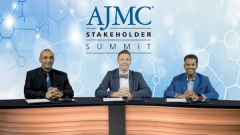
Evaluating Economic Impact of Emerging Therapies for Dry Eye Disease
A professional analysis of the potential cost-effective impact of emerging dry eye therapies on the health care system.
Episodes in this series

This is a video synopsis/summary of a Stakeholder Summit involving:
Ryan Haumschild, PharmD, MS, MBA; Jai G. Parekh, MD, MBA; and Alexander Kabiri, OD.
Haumschild queries cost-effectiveness considerations around emerging dry eye disease (DED) therapies. Parekh states early DED identification and tailored treatment represents prevention, optimizing societal outcomes over following thousands of patients. Applying this population health approach can modify disease trajectory. Delaying intervention risks irreversible ocular surface damage and vision impairment despite eventual treatment. An upfront focus on appropriate therapy facilitates quality outcomes in a value-based model.
Kabiri discusses the responsibility for providers to address DED’s high prevalence with patient education and evidence-based recommendations, not just reacting to active complaints. Patients increasingly self-diagnose DED and expect specialist guidance on best practices. Effectively communicating around promising therapies enables access that impacts countless patients. Haumschild concurs this represents both an obligation and opportunity for optimal DED management benefiting all stakeholders.
Video synopsis is AI-generated and reviewed by AJMCÒ editorial staff.
Newsletter
Stay ahead of policy, cost, and value—subscribe to AJMC for expert insights at the intersection of clinical care and health economics.










































